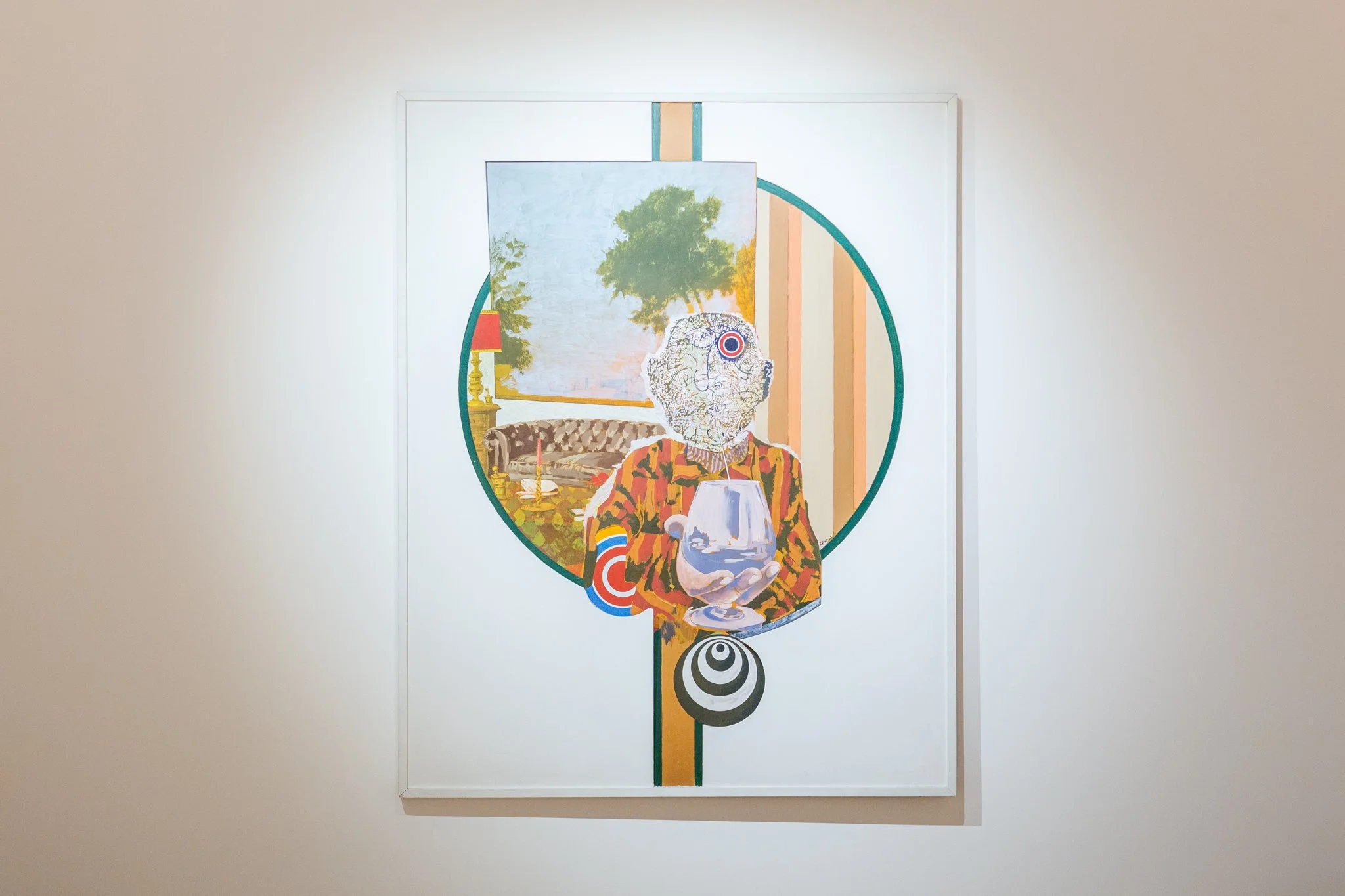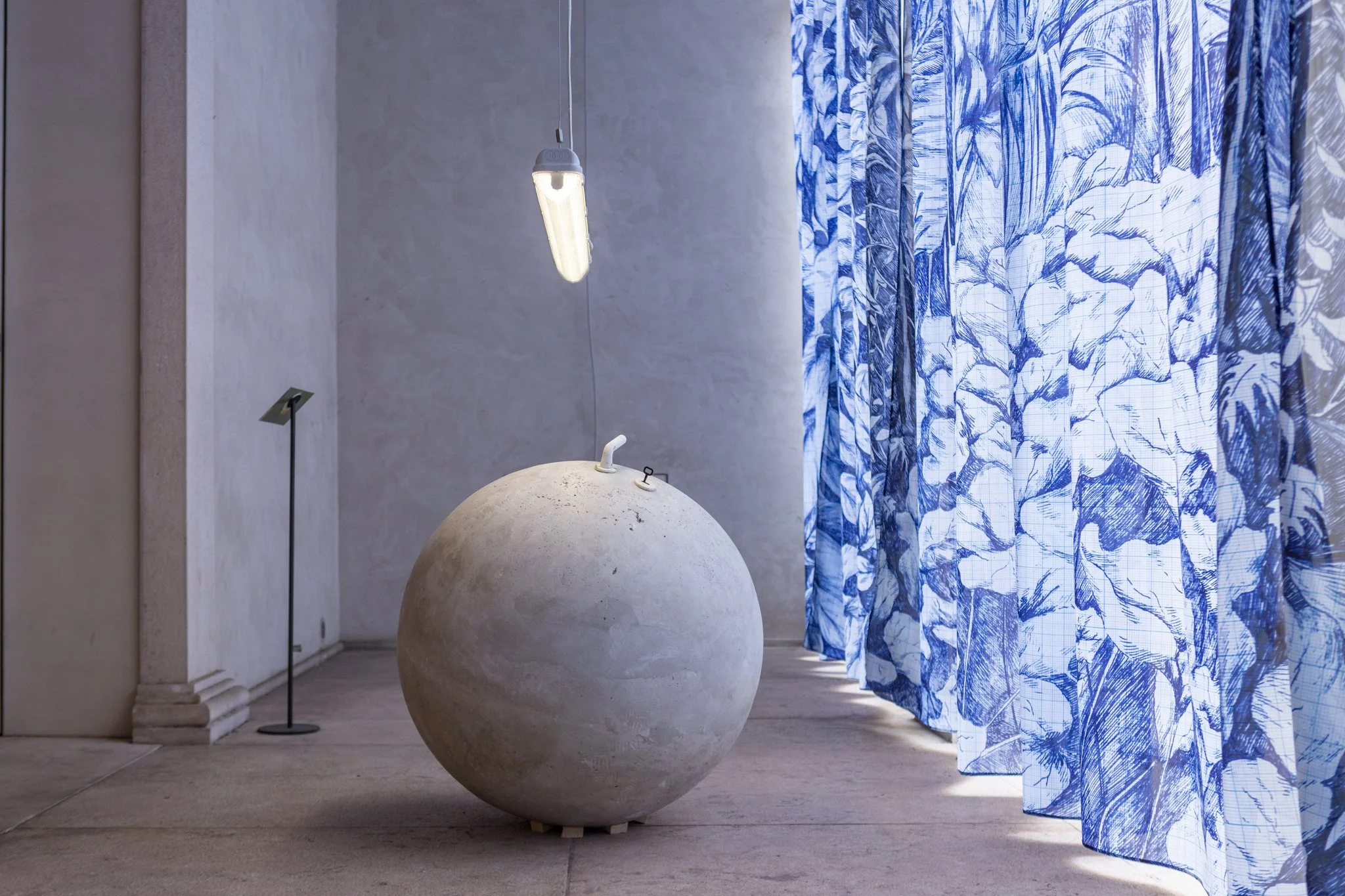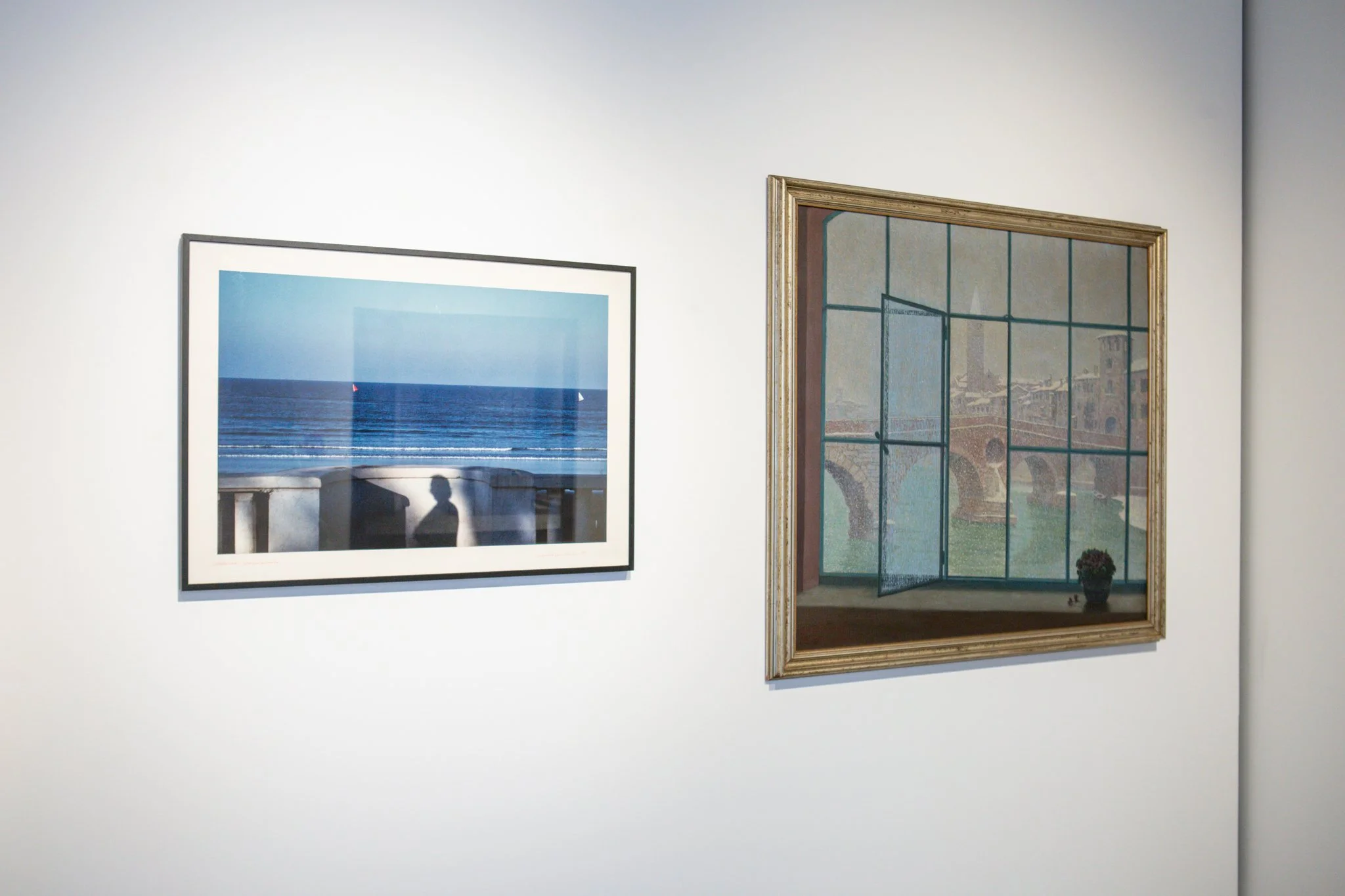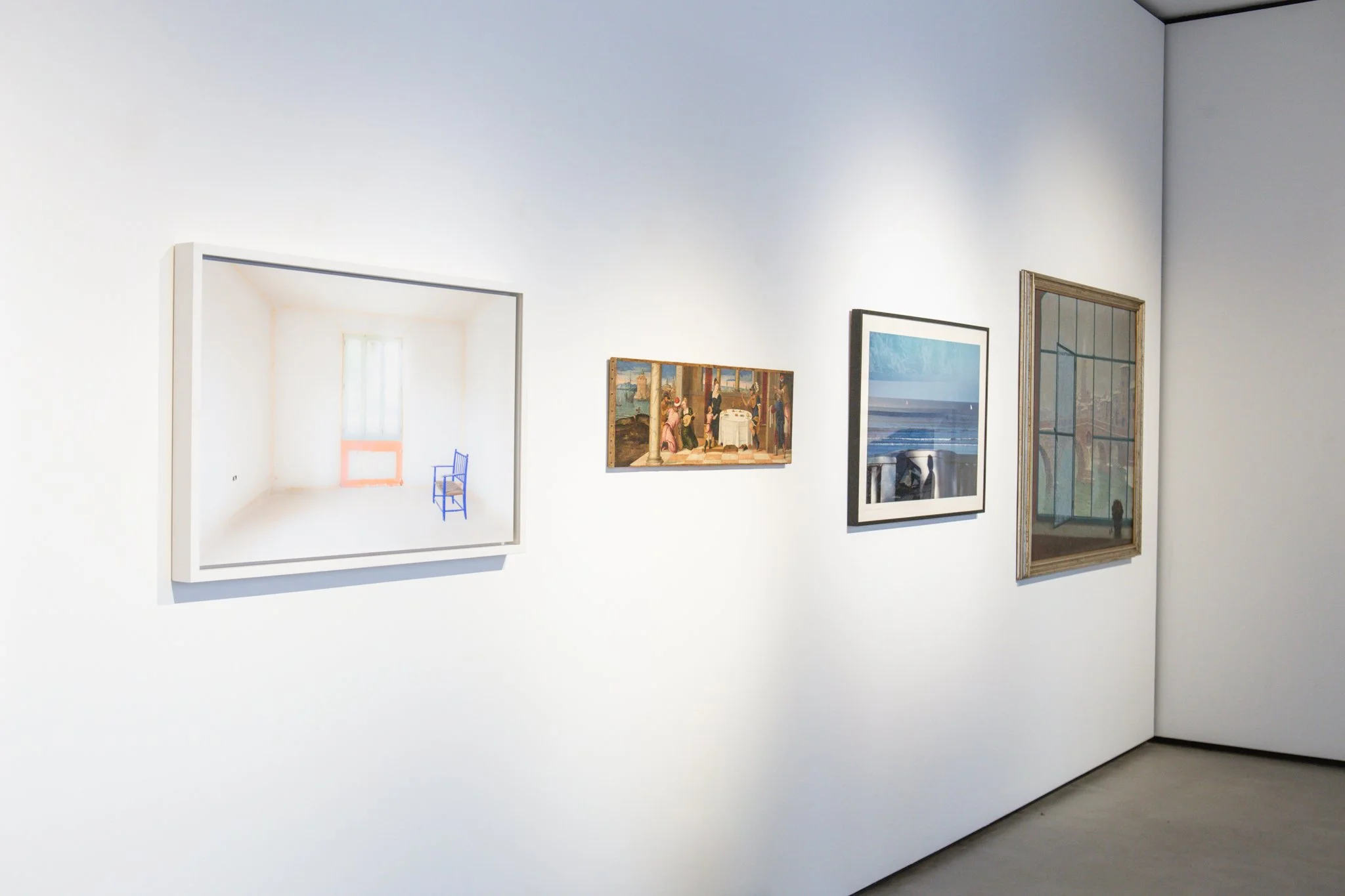FUORI, nella terra dell'uomo, 2022
Curated by Pietro Ruffo
Artistic direction of Jessica Bianchera and Will Davis
Palazzo Pellegrini, Verona, Italy
October 14, 2022 - January 22, 2023
FUORI, nella terra dell’uomo, curated by artist Pietro Ruffo, a collective that has been able to bring together two important historical collections after more than ten years, the Cariverona Foundation and the UniCredit group and from 14 October 2022 to January 22 2023, will live in the halls of Palazzo Pellegrini, headquarters of the Cariverona Foundation in the historic heart of Verona. The exhibition, specially designed for the "Art & The City" section of the VIP Program of ArtVerona, the famous modern and contemporary art fair set in the city of Verona, now in its 17th edition (14-16 October 2022), is a project by Fondazione Cariverona and UniCredit in collaboration with Urbs Picta, with the artistic direction of Jessica Bianchera and Will Davis.
“Every inch of the environment that surrounds us seems to have been domesticated and we live a constant otherness between us and nature, which rebels, putting our existence to the test, to the point of keeping us locked in the house. ”
Photo courtesy UniCredit & Fondazione Cariverona. Photo Nicolò Lucchi
The exhibition, which features the works of 26 artists from different geographical backgrounds, as well as techniques, styles and eras, is an invitation to look at the world from a different angle, as a way to both measure ourselves against it, but also to rediscover ourselves. As the famous author of the Little Prince, Antoine de Saint-Exupéry, urged in his novel Land of Men (1939) from which the title of the exhibition takes inspiration.
In this anthropic and man-made world, the landscape is featured in more than 30 works on display and seems to be a projection of the mind of man, rather than a real physical place. The environment represented here is, in fact, always the human point of view, which lies reflections, projections and references; in cropped perspective that constrain infinite space; in maps that frame vast territories; or in fragments of architecture that create new space by repositioning themselves. The exhibition can be experienced as a large opening from which one looks to the outside world. The visitor will immerse themselves in the remains of architecture, admire views from terraces and windows, peek into the houses of others, between railings, open the windows and see what lies behind until they find Verona itself.
The journey of the exhibition, presented by artist-curator Pietro Ruffo, opens with one of his highly scenographic and site-specific work conceived for the occasion: Fuori (2022), a large curtain, light and ethereal, on which a primordial forest is depicted, an archetype of the natural landscape from which humanity comes. Only by crossing the work, this membrane that filters the inside and the outside, which "measures" the environment with its graph paper and contains it between the colonnade of the building, will it be possible to enter the exhibition; an obligatory entrance that leads the visitor to enter the message of the exhibition. The following works all speak to the relationship between inside and outside, not only physically but also metaphorically, referring to the intimate sphere of emotional and mental feeling, such as Stanza (2008) by Elia Cantori, a concrete sphere that contains a landscape within or Icona (n.1) (1972) by Giorgio Olivieri an archetype of the house.
Stanza (2008), Elia Cantori. © the artist. Photo courtesy UniCredit & Fondazione Cariverona. Photo Nicolò Lucchi
Humanity is constantly present in the exhibited works, not with its physical presence but with its gaze. Man is represented through an outline, silhouette, or shadows, as in Casablanca, presenzassenza (1987) by Franco Fontana. In others, it is recalled by anthropomorphic forms, as in Ritratto di un borghese by Silvano Girardello (1967 -1968). The only exception is Il Banchetto di Didone (about 1540-1542) by Bonifacio Veronese, the only non-contemporary work on display, which shows figures socialising. In fact, the work takes up the theme of the gaze from within the domestic walls. An interior that reflects the idea of the home and gives meaning to the idea of the "outside". The theme of human presence, almost never explicit, therefore calls into question the observer, who becomes the protagonist of all these environments trying to discover the outside from the inside and vice versa, as in Pizzi Cannella's Bella coppia Pulcinelle (parte 1) (2003) or Finestra nel vuoto (1980s) by Mario Schifano, where the inside and the outside seem to merge; each work thus becomes the mirror of an interior landscape.
Pietro Ruffo states: "In recent years the theme of the anthropocene and the anthropized landscape is very present in the research of geologists, anthropologists, environmentalists and is widely explored by artists. Every inch of the environment that surrounds us seems to have been domesticated and we live a constant otherness between us and nature, which rebels, putting our existence to the test, to the point of keeping us locked in the house. The perception of the landscape, then, is transformed and art bears witness to it: a landscape that is no longer hospitable is idealised and becomes an interior reflection, as if the real anthropic landscape were what we create in our subconscious, within the comfortable walls. domestic. The selection of the works, initially focused on the representation of the landscape, has therefore become a sort of catalogue of moods and interior landscapes, making this exhibition very intimate, able to speak differently to each visitor ".
Jessica Bianchera and Will Davis continue: "The exhibition is configured as an intimate and immersive space in which the works are transformed into a device of vision, to access which you have to cross the scenographic curtain between the columns of the portico, specially conceived by Pietro Ruffo. The work is a primordial forest, the deepest image in our subconscious, the ancestral habitat that covered the earth fifty-five million years ago when man's adventure in the world originated, "the garden of Eden" from which he was expelled”.
"The enhancement path of the Fondazione Cariverona collection is now enriched with new, and in some ways unexpected, meanings: with the project" FUORI, nella terra dell'uomo "we are able to relate our work with the three-year strategic goal of "Protection, Care of the Environment and Enhancement of Territories" in which we are investing a lot - underlines Alessandro Mazzucco, President of the Cariverona Foundation - and, at the same time, we put the two Unicredit-Cariverona collections into dialogue by developing a common project open to the territory, in a constant dialogue that sees us collaborating in various fields and sectors with the common goal of bringing economic, social and cultural development with a careful eye on the development paths of the younger generations.
Andrea Orcel, CEO and Head of Italy of UniCredit declares: "Culture is a crucial part of our development as a company. It shapes our thoughts and beliefs, how we interact with each other and how we grow collectively. For this reason of fundamental importance, we are convinced that art and culture must be accessible to all, therefore I am pleased that UniCredit is working to ensure that this happens in every country in which it operates. The collaboration with the Cariverona Foundation, at the basis of the " FUORI, nella terra dell'uomo" project, is the latest demonstration of our commitment in this sense and in the conservation of the artistic heritage of our society for the benefit of all. This, together with the financial support we provide, allows us to fulfil the social role of banks and unleash the potential of European communities. I invite anyone who has the opportunity to see this exhibition to do so and to share it with their friends and family, in particular with young people who have never seen works of this type."
Pietro Ruffo (Rome, 1978) lives and works in Rome. He studied architecture at the University of Rome and obtained a research grant at the Italian Academy for Advanced Studies at Columbia University in New York in 2010. Ruffo's art is linked to the fundamental elements of architectural practice. Each work is the result of extensive research and uses scraps of paper, ceramics, texts, tiles, and painting to create natural landscapes, human forms, geographical maps, constellations and geometries. Ruffo's practice speaks of a universal history, individual freedoms and a unified global community.





























